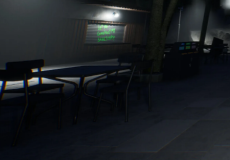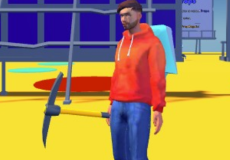
Prison Escape Simulator
Advertisement
Prison Escape Simulator places the player inside a secure correctional facility where every action must be calculated to avoid detection and work toward escape. The experience is built around observation, resourcefulness and step-by-step planning. Players move through restricted zones, interact with objects that appear ordinary and attempt to gather tools that can assist in building a viable escape route. The prison layout creates a structure where mistakes have immediate consequences, and every decision affects the possibilities ahead.
Advertisement
Similiar games
Prison Escape Simulator places the player inside a secure correctional facility where every action must be calculated to avoid detection and work toward escape. The experience is built around observation, resourcefulness and step-by-step planning. Players move through restricted zones, interact with objects that appear ordinary and attempt to gather tools that can assist in building a viable escape route. The prison layout creates a structure where mistakes have immediate consequences, and every decision affects the possibilities ahead.
Environment and Daily Routine
The game introduces a strict schedule that governs movement and access. The player participates in activities such as roll calls, meal times and yard sessions, all of which provide opportunities to scout locations or identify weak points in the system. Guards patrol hallways with set patterns, and surveillance devices monitor key areas. Learning the prison’s rhythm becomes essential, since understanding how the routine shifts throughout the day can reveal openings that are not obvious during early gameplay.
Core Mechanics and Escape Tools
Prison Escape Simulator uses several interlocking mechanics that shape progression and create opportunities for escape:
- collecting small items that can be crafted into useful tools
- observing guard movement and identifying blind spots
- performing tasks that reduce suspicion
- exploring vents, storage rooms or service tunnels
- planning multi-step sequences that connect isolated areas
These mechanics turn each escape attempt into a puzzle where the player must combine timing, awareness and incremental preparation.
Strategy, Risk and Suspicion
As the escape plan develops, players must manage suspicion levels. Acting too quickly or breaking routine draws unwanted attention, while moving too slowly can reduce available opportunities. Some tasks require cooperation with non-playable characters, while others rely on understanding how to bypass security systems. Each choice influences whether guards react, ignore or investigate. Because the prison environment is tight and monitored, even small missteps can undo previous progress.
Prison Escape Simulator builds its experience around gradual planning rather than random movement. Success requires studying the environment, testing pathways and adapting strategies when conditions change. The facility acts as both obstacle and guide, revealing information through patterns rather than direct hints. Over time, players learn how to combine tools, timing and spatial understanding to create a successful escape route. The game encourages patience and analysis, offering a structure where mastery emerges from repeated attempts and improved awareness.
Discuss Prison Escape Simulator


















